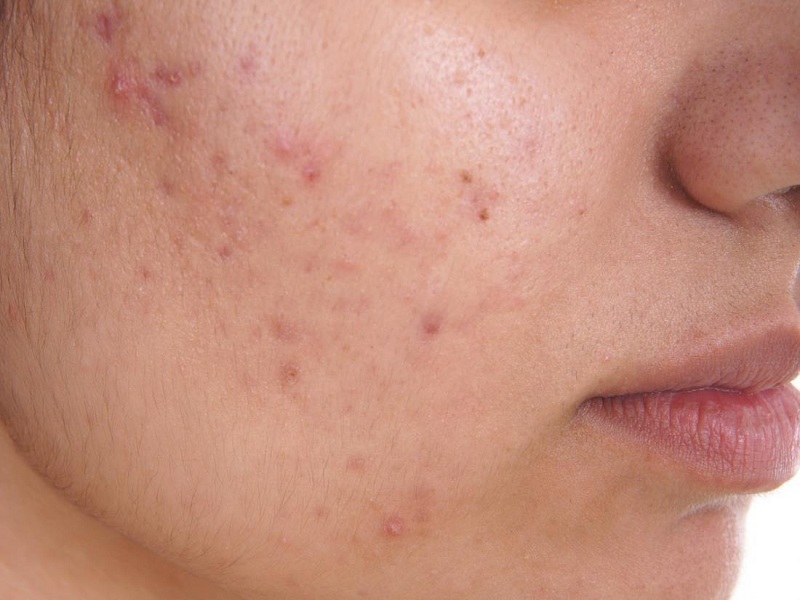No products in the cart.

يُعتبر حب الشباب من أكثر الأمراض الجلدية شيوعًا حيث يُصيب معظم الأشخاص في مرحلة ما من حياتهم. هناك عدة أنواع من حب الشباب تتراوح من الخفيف إلى الشديد، وقد تظهر في مناطق مختلفة من الجسم. معرفة النوع الذي تعاني منه يساعدك على اختيار علاج حب الشباب المناسب.
الفئات الرئيسية تشمل: الرؤوس السوداء، الرؤوس البيضاء، والأكياس الدهنية (حب الشباب الكيسي). تتكون الرؤوس السوداء عندما تسد الدهون وخلايا الجلد الميتة المسام، مما يعطيها لونًا داكنًا على السطح، بينما تظهر الرؤوس البيضاء عندما تُحتجز هذه المواد تحت الجلد، فتبدو كبثور بيضاء صغيرة. أما الأكياس الدهنية أو الكيسية فتتشكل بعمق داخل المسام أو بصيلات الشعر، وتؤدي إلى نتوءات حمراء متورمة ومؤلمة.
هذه الأكياس غالبًا ما تكون أكثر إيلامًا من الأنواع الأخرى من حب الشباب بسبب الالتهاب في المنطقة المصابة.
يتطور حب الشباب عندما تنسد مسام الجلد بفائض من الزيوت (الزهم) وخلايا الجلد الميتة. غالبًا ما يظهر في الوجه، الرقبة، الظهر، الصدر، والكتفين، لكنه قد يظهر أيضًا حول الشفاه أو داخل الأذن. النوع الأكثر شيوعًا هو حب الشباب الكوميدوني، والذي يشمل الرؤوس السوداء والرؤوس البيضاء.
تُعد الرؤوس السوداء على الأنف من أكثر الأنواع شيوعًا بسبب تراكم الدهون في هذه المنطقة. وعندما تبقى المسام مسدودة لفترة طويلة قد يحدث تهيج يؤدي إلى التهاب أو تكوّن البثور أو حتى الأكياس الدهنية العميقة. كما أن البكتيريا الموجودة داخل هذه المسام المغلقة قد تزيد الحالة سوءًا، مما يؤدي إلى الطفح الجلدي وظهور بثور أكثر ألمًا إذا لم يتم علاجها.
بقع داكنة صغيرة تتكون عندما تُسد المسام جزئيًا بالزيت وخلايا الجلد الميتة. اللون الداكن ليس أوساخًا وإنما نتيجة تعرض المادة المسدودة للأكسجين. تظهر عادة على الأنف، الجبهة، والذقن.
تظهر عندما تُسد المسام بالكامل، محبوسة تحت الجلد. تبدو ككتل صغيرة برأس أبيض أو مائل للأصفر. أحيانًا تُعرف بـ الرؤوس البيضاء تحت الجلد، وقد تصبح ملتهبة إذا لم تُعالج.
شكل شديد من حب الشباب يتطور بعمق تحت الجلد. يظهر كعقد حمراء كبيرة ومؤلمة مليئة بالقيح. هذا النوع غالبًا يترك ندوبًا ويتطلب علاجًا طبيًا.
نتوءات حمراء ملتهبة لها مركز أبيض أو أصفر مليء بالقيح. أخف من الأكياس ولكنها مؤلمة أيضًا وتنتج عن عدوى بكتيرية في المسام المسدودة.
في بعض الحالات، قد ينصح الأطباء باستخدام العلاج بالليزر أو التقشير الكيميائي لتقليل حب الشباب في الوجه ومنع الندوب.
من الأسهل غالبًا الوقاية من حب الشباب بدلًا من علاج الحالات الشديدة. جرب هذه النصائح:
قد يكون حب الشباب مزعجًا سواء كان على شكل الرؤوس البيضاء تحت الجلد، البثور المليئة بالقيح، أو الأكياس الدهنية المؤلمة. لكن المفتاح للحصول على بشرة أوضح هو معرفة نوع حب الشباب الذي لديك واختيار علاج حب الشباب المناسب. مع الروتين الصحيح والنصائح الطبية واتباع أسلوب حياة صحي، يمكنك تقليل الطفح الجلدي وتحسين صحة بشرتك مع مرور الوقت
